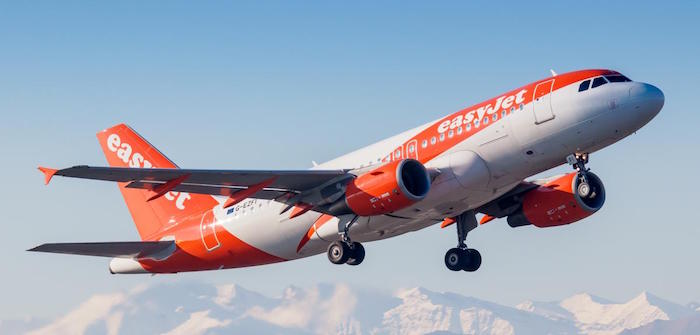European airlines showed pent-up demand in Q3

European airlines’ Q3 results could show that pent-up demand has a bit further to run after positive updates from full-service (IAG and Lufthansa) and discount (EasyJet and Ryanair) carriers. Yet management teams must show preparedness for mounting costs and the squeeze on consumer budgets, with our scenario analysis suggesting an abrupt hit to leisure demand in 2023.
The spot price of jet fuel has softened since June but is still up about 70% vs the 2019 average, so it remains a threat to profitability as more hedges expire. Network carriers rely heavily on corporate and transatlantic travel, potentially providing some protection against a strong dollar. Budget airlines continue to capture market share and increase competition within short haul.
Next year should drive more airline conversation
Current-year earnings expectations for Europe’s three key legacy airlines – IAG, Air France-KLM and Lufthansa Group – have been resilient since Q2, yet the 2023 outlooks remain uncertain amid deteriorating macroeconomic factors. The expiration of fuel hedges and rising wages may be hard to fully offset with higher yields as leisure customers cut discretionary spending, so a recovery in corporate travel is key for profitability. Finnair and SAS are among the worst hit by Russian air space closures and need restructuring, while Turkish Airlines is benefiting from more passengers, lira-denominated costs and cargo.
IAG is overcoming capacity cuts using higher yields, with transatlantic operations ramping up and pent-up demand likely enabling conditions to deliver higher sales. While partially hedged this year, rising fuel prices on top of airport fees could mean further fare hikes and uncertainty to the more price-sensitive passenger segments, albeit with no weakness in bookings indicated yet for 4Q.
The extent of corporate travel returning on certain routes is key for margin as the seasonal dip in leisure travel approaches. Media reports suggest IAG is in talks to buy a remaining 80% stake in Spanish carrier Air Europa, which along with capital spending requirements would put further pressure on net debt. If no equity is raised, net debt could remain above that of legacy peers Air France-KLM and Lufthansa.
Discount airlines face volatility, rising rates
The war in Ukraine, a resulting energy crisis, dollar strength and rising interest rates threaten to jeopardise European discount airlines’ revenues and costs, with many unable to offset the effects with activity from outside the region. Ryanair’s profit looks the most resilient, while Wizz Air’s fiscal 2023 (ending March) margin expectations have cratered amid disruptions and limited hedging, particularly for jet fuel.
EasyJet’s recent update suggests cancellation and delay costs are under better control, and initial bookings for the quarter ending December look respectable, yet it has significant exposure to the downturn in the UK economy. Norwegian Air is getting its downsized operations back to normal conditions under a new management team and strategy after facing financial difficulties during the pandemic.
Ryanair’s utilisation and load factor through the important summer period points to much greater operating efficiency vs peers, driving profit higher, assuming good yield management and cost control. The airline has been cautious and refrained from guidance thus far, but the cited adverse news flow risks on Covid-19 or war haven’t developed.
Bookings also appear strong for the autumn and Christmas holiday periods despite rising costs of living. The UK’s political troubles have damaged confidence further, though Ryanair seeks to benefit from these customers trading down to budget carriers. Ryanair enjoys some natural hedging on the pound as the carrier employs a large number in bases such as Stansted to offset the revenue impact. The company has been negotiating post-Covid-19 pay improvements with unions.
Q2 was Wizz Air’s busiest period, but expectations were already slashed due to Russia’s invasion of Ukraine, limited fuel hedging and disruption. Staff shortages and operational snags meant buffers had to be built in, which lowered capacity but eased costs. The carrier’s fleet size is now about 40% larger vs this time in 2019, so utilisation appears even more key for profitability, and analysts may be looking for comments on forward demand after encouragement from EasyJet’s trading statement.
The Middle East is part of the Hungarian carrier’s eastward strategy, as it stretches its reach to new markets with limited low-cost competition. Wizz Air Abu Dhabi is ramping up, while in Saudi Arabia, Wizz’s inbound flights commenced on 28th September; a national partner is needed for outbound.
EasyJet’s capacity cuts helped bring disruption costs under control during fiscal 4Q (ending September), with stronger demand driving a jump to £470-490 million in headline pre-tax profit. Plus EasyJet Holidays is starting well, generating more than £35 million in fiscal 2022 pre-tax profit. Yet the budget airline faces different challenges after a busy summer period, albeit with passenger caps still in place at Amsterdam Schiphol. While UK seats are planned near pre-Covid-19 levels for the October and Christmas holidays, demand may be fragile in non-peak times as real incomes are squeezed.
EasyJet has reasonable cover as costs rise. Fuel is about 69% hedged for 1H23 at US$802 per metric ton, and 44% for 2H23 at $897 vs a $1,100 spot price. There is also some cover on dollars, with these lease payments hedged for three years.
